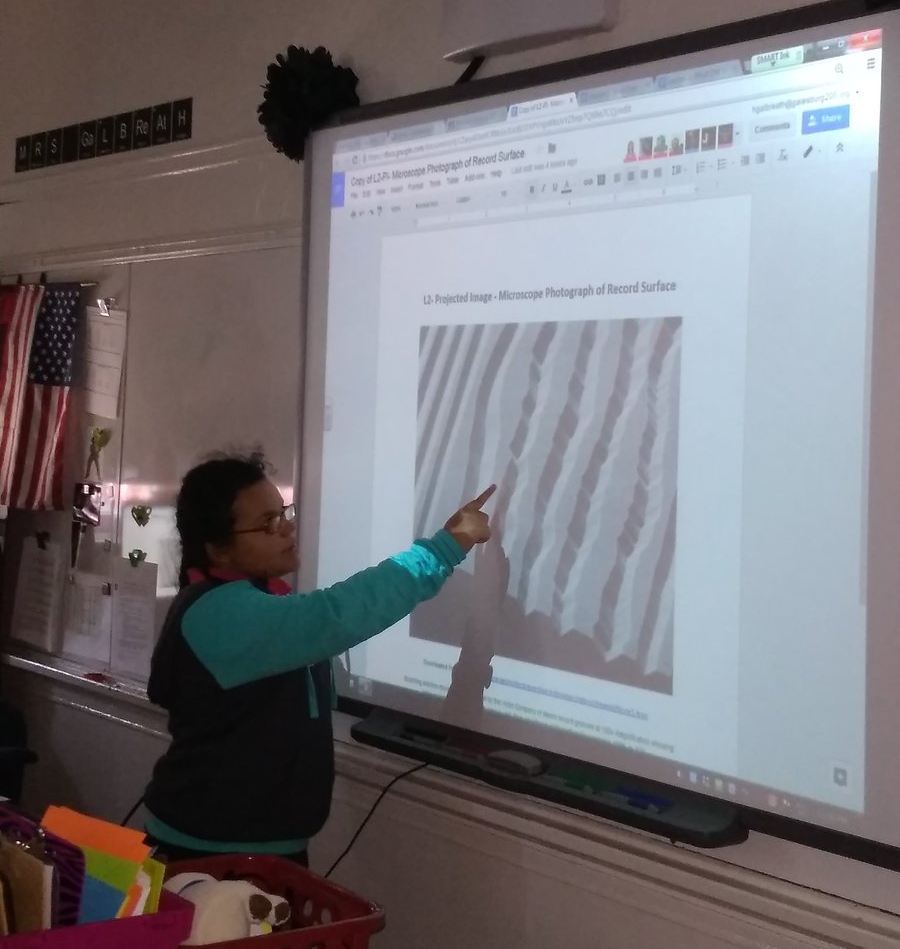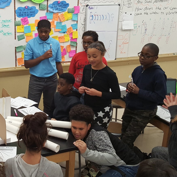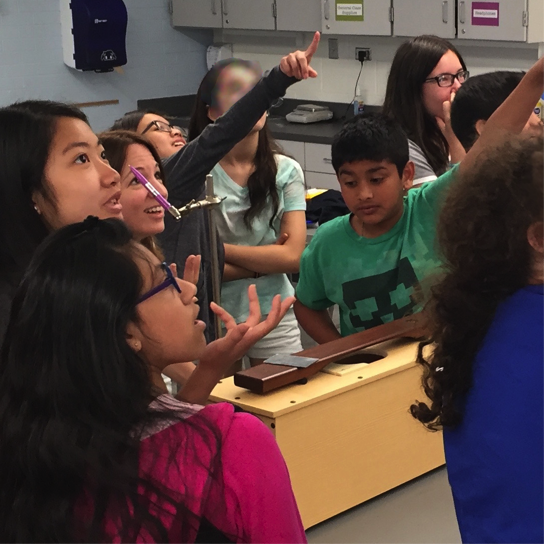

What does the record look like up close?
We really wanted to inspect the record more closely. We use a magnifying glass, and some really interesting patterns on the surface of the record. We want a closer view. Looking at the surface of the record again through a powerful microscope reveals some really important clues about how different sounds might be produced and how all this information might be encoded.




Do all objects vibrate like this when they are making sounds?
Maybe some objects like the table or the floor don't vibrate when we hit them or walk on them. Or maybe these objects are vibrating just a little bit (at a scale that is too fast or too small for us to see). We come up with lots of ways to detect and inspect such motion, by slowing it down or scaling it up.

How does this thing produce different notes?
There are lots of instruments, like guitars, pianos, harps, xylophones, that produce different notes when we play them. A music box is another thing that does this. When we inspect the structure of all these devices more closely, we uncover a relationship between the length of an object and the pitch of the sound it produces when struck or plucked.


How do the vibrations of the sound source compare for louder and softer sounds?
Graphing the motion of a vibrating object provide us clues about what might causing a sound to be louder vs. softer. There are so many interesting features in these graphs to compare, such as the repeating pattern it makes, the distance it travels, how long it takes for this pattern to repeat.














